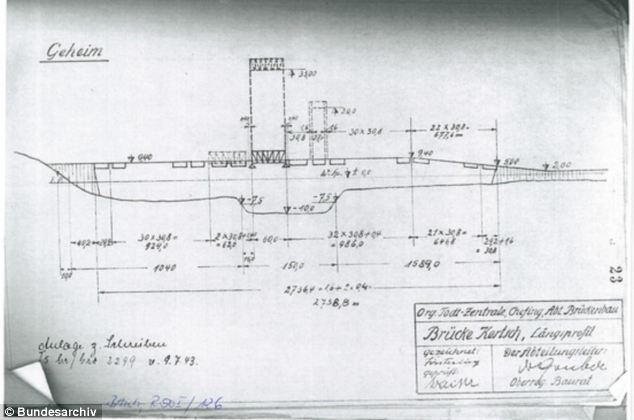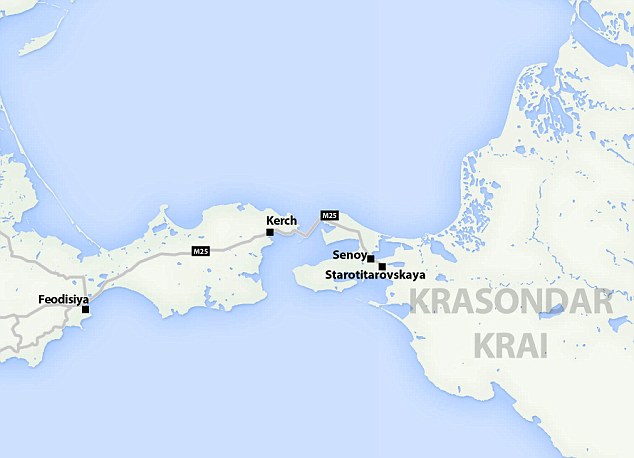During the Second World War, Nazi’s planned to build a bridge that connected the Crimea region of Ukraine to Russia, but the plans never came to fruition. Russian Prime Minister, Dmitry Medvedev has created a company that will revive the plans and complete the project.
The proposed bridge would span the Strait of Kerch between the Chushka Spit in Russia and the Kerch Neninsula in Ukraine which will give Russia one of three major entrance points into the Crimean peninsula.
The idea for the bridge to link the two countries was originally conceived by German architect, Albert Speer during the Second World War. The hope was the bridge would help the German invasion of the North Caucasus.
Medvedev said the plans were signed by Russia and Ukraine in 2010 to build the bridge in 2010 are still binding, even though there are growing tensions between the two countries after Russia decided to send troops into the Crimean region following the ousting of Ukrainian president, Viktor Yanukovych.
Russia has refused to recognize the new “unconstitutional” government in Kiev which is run by militants and ultra-nationalists.
It claims to have entered Crimea in order to protect Russian-speakers who make up the majority of the population in the southern regions of Ukraine. During a meeting with his deputies on Monday, Medvedev demanded practical work on the bridge to begin immediately, stating: ‘Ukraine has always been and will remain an important trade and economic partner to us, and the government should work on these issues.
‘We are following the developments closely,’ he added.
The Kerch Strait Bridge has a long history, a history that Medvedev may not want to be associated with.
In 1943, Adolf Hitler personally commissioned a three-mile rail and road bridge based on the plans Speer’s created. Hitler hoped this bridge will help him conquer the Soviet Union.
The iron and concrete structure was supposed to replace a rope bridge that had been built to support the retreat the German Organization Todt the previous year.
The Daily Mail discovered that Speer was given only six months to build a new bridge. His memoirs reflected his doubts over the project and how realistic the request was, especially considering how rapidly the Soviet army was approaching.
“Even at the time, it was clear that the bridge would never be completed,” Speer wrote.
As the Soviet troops began to push toward Berlin in 1943, the retreating German army left behind an incomplete 2.8 mile stretch of bridge that began to crumble within two years.
By the 60s, the much of the bridge had been submerged by the sea, but it was so dangerous for ships trying to pass through, the remains had been cleared away completely.
Since the end of the war, the bridge had numerous plans and attempts to be completed. In 2010, Ukrainian President, Viktor Yanukovych and Russian President, Dmitry Medvedev signed a new agreement to construct a bridge across the Strait.
In late January of this year, the two governments decided that a pan-national company would be commissioned to handle the construction of the bridge. The Russian state enterprise Russian Highways would become responsible for it long term.
Medvedev’s signing of the decree stated his intention to see the project to completion, despite the Ukrainian government being ousted and the growing tension between the countries.

